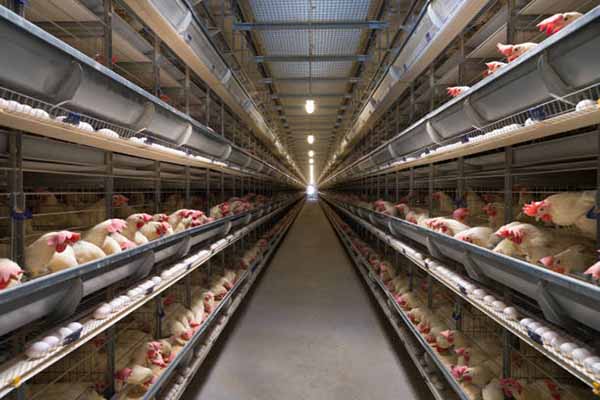How to Raise Broiler Chickens Cage-Free, Organic, and Holistic: A Professional’s Guide
Time : 2025-06-24
In the world of modern poultry farming, the concept of raising chickens has evolved significantly. Broiler chickens, known for their rapid growth, have been the staple of many commercial farming operations. However, traditional methods often involve keeping chickens in cages, which can lead to various ethical and health concerns. This article delves into the art of raising broiler chickens cage-free, organic, and holistic, offering insights from the field of professional poultry farming equipment.
The Case for Cage-Free, Organic, and Holistic Raising
The idea of raising broiler chickens cage-free, organic, and holistic might seem revolutionary. However, it’s becoming more of a necessity as consumers and farmers alike are recognizing the benefits of ethical farming practices.
Cage-Free: A Broader Perspective
Raising broiler chickens cage-free is the most obvious change. Free-range chickens can express their natural behaviors, which can lead to improved overall health and well-being. Cage-free environments are generally cleaner, safer, and result in a higher-quality end product.
Organic: A Healthier Alternative
Organic broiler chicken farming uses feed that is free from synthetic hormones, antibiotics, and other additives. This not only benefits the chickens but also ensures that the final product is healthier and tastier for consumers.
Holistic: The Balanced Approach
Holistic farming takes into account the whole system – the chickens, the environment, and the broader farm operations. This approach ensures that each aspect of the farming process is optimized for the well-being of all parties involved.
Setting Up the Environment: Poultry Farming Equipment and Infrastructure
To raise broiler chickens cage-free, organic, and holistic, it’s essential to have the right poultry farming equipment and infrastructure in place.
Brooder Systems
A high-quality brooder is a cornerstone of any successful poultry farming operation. It provides the initial environment where chickens are kept warm, protected from predators, and gradually transitioned to the main farming area. Advanced brooder systems should include features like automated temperature control, lighting, and feeding systems.
Free-Range Areas
For a true cage-free operation, free-range areas must be well-designed. They should provide enough space for chickens to roam and forage, along with appropriate protection from the elements. Runners, shelters, and shade areas can help keep the chickens comfortable throughout the year.
Feed Systems
Organic feed systems are also critical. These systems should be able to handle organic grains and seeds, ensuring that the chickens receive the right balance of nutrients. Modern equipment, such as automated feeders, can make feeding more efficient and less labor-intensive.
Water Systems
Access to clean water is crucial for the health and welfare of chickens. Poultry farming equipment that includes automated waterers ensures that chickens always have access to fresh water, reducing the risk of dehydration and health issues.
The Art of Chicken Raising: Practices and Techniques
With the right equipment and environment in place, the next step is mastering the art of raising broiler chickens. Here are some essential practices and techniques:
Monitoring Health
Regular health checks are critical. By using advanced poultry farming equipment, such as scales, body condition scorers, and health monitoring systems, farmers can keep a close eye on their chickens and quickly address any issues.
Feeding Practices
Organic feeding requires attention to detail. Knowing what and how much to feed your chickens is crucial. Advanced feed systems can be calibrated to ensure that each chicken receives the right amount of organic feed, maximizing growth and health.
Behavioral Enrichment
Free-range chickens can exhibit natural behaviors such as scratching, foraging, and dust bathing. Providing enrichment items and stimulating activities in their environment can enhance their overall well-being and improve productivity.
Eco-Friendly Practices
As a holistic approach involves considering the environment, eco-friendly practices such as composting and using renewable energy sources should be adopted where possible.
Challenges and Solutions in Cage-Free, Organic, and Holistic Raising
Despite the many benefits of cage-free, organic, and holistic broiler chicken farming, there are challenges that come with these practices.
Challenge: Disease Management
Without the confinements of a cage, disease can spread more easily. To address this, a robust biosecurity program is necessary, which includes regular sanitation of equipment, vaccinations, and isolation of sick chickens.
Challenge: Increased Costs
Cage-free, organic, and holistic farming can be more expensive due to the higher quality of feed, labor costs, and other considerations. To mitigate this, many farmers opt for advanced poultry farming equipment that streamlines operations and reduces overhead.
Challenge: Market Access
Organic and cage-free chicken products often command higher prices in the market. However, building a strong market for these products can take time and effort. Developing relationships with retailers and distributors can help farmers gain access to these markets.
Conclusion
Raising broiler chickens cage-free, organic, and holistic is not just a trend; it’s the future of poultry farming. By embracing advanced poultry farming equipment, adopting ethical practices, and taking a holistic approach to farming, farmers can ensure the health and well-being of their chickens while providing consumers with the highest-quality product.












